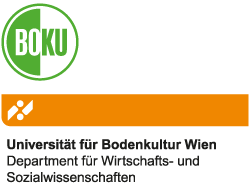In the CON-LABOUR project, the concept of conversion is integrated into the larger context of the social-ecological transformation of the mobility and transport system, which so far has been dominated by the car. It refers to the industrial dimension of the transformation. Accordingly, conversion of a car company describes a process of complete restructuring of its business model. In the mobility sector this means a shift in production away from cars and individual transport and towards public transport and other more social-ecological products and services.
Six forms of industrial transformation can be distinguished. In reality, a combination of several types of transformation and a gradual change can often be observed:
- Conversion,
- Social-ecological modernization,
- Phase-out of a product line or industry,
- Diversification of the existing business model,
- Joint Ventures,
- Sustainably oriented start-ups, spin-offs or company mergers which contribute to the transformation of the industry.
Changes in production are not necessarily made consciously and sustainably with an overall coordinated strategic concept. In addition to this so-called conversion by design, there is also conversion by disaster.
In times of the corona pandemic, companies in the automotive industry are converting their production facilities from one day to the next and are producing socially necessary products due to governmental incentives. General Motors and Ford in the USA produce ventilators to prevent the overburdening of the US health care system. Similarly in Spain, a Seat plant produces ventilators. In Germany, automotive suppliers in Bavaria produce respiratory masks following a government order. And in Italy, Ferrari and Fiat are cooperating with equipment manufacturer Siare Engineering to achieve higher production capacities for medical equipment. However this conversion by disaster is most likely only a temporary change.
Conversion processes should integrate the extensive know-how and the central role of the employees and their representatives and be designed in a democratic and participatory manner. The involvement of social groups and stakeholders such as customers, environmental organisations and politicians is also feasible and desirable.
An attempt of a participatory democratic conversion was the Lucas Plan. In the 1970s, employees of Lucas Aerospace, a defence contractor in the UK, presented a plan to develop innovative and socially useful products. Within just one year they developed 150 prototypes in the following categories: medical devices, alternative energy sources, transport systems, braking systems, maritime systems and medical equipment. However, the project failed due to resistance from trade unions and the government.
Ein Klick auf das Video baut eine Verbindung zu YouTube auf. Siehe unsere Datenschutzerklärung.
Another historic example ist the rapid conversion of industry in the USA during the Second World War from civil products to military goods and aircraft. This is an example of conversion by disaster, but footage from that time illustrates the possibilities of industrial conversion today.
Ein Klick auf das Video baut eine Verbindung zu YouTube auf. Siehe unsere Datenschutzerklärung.



